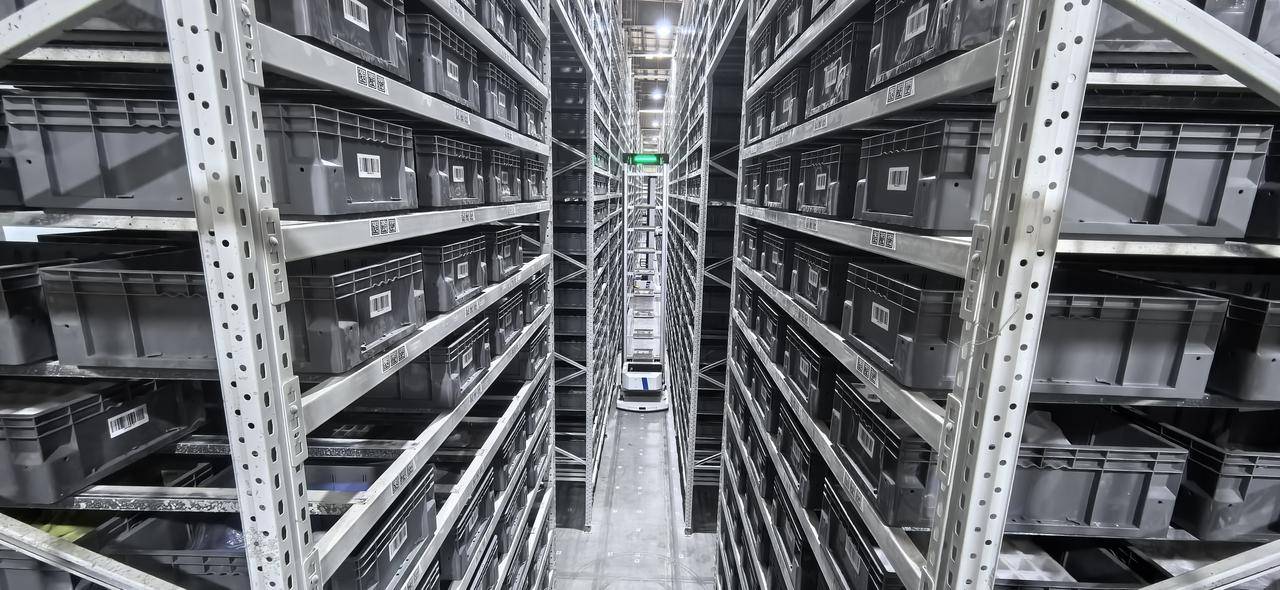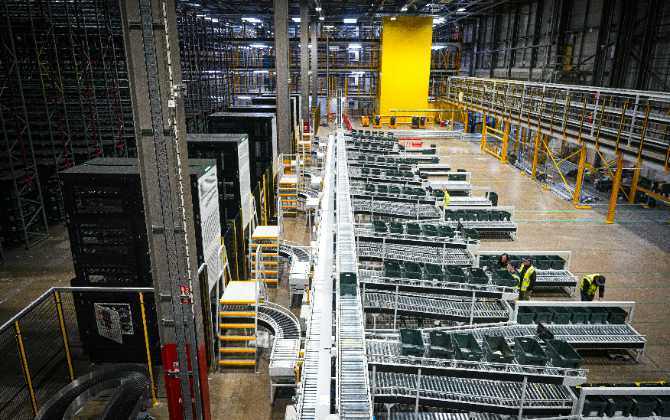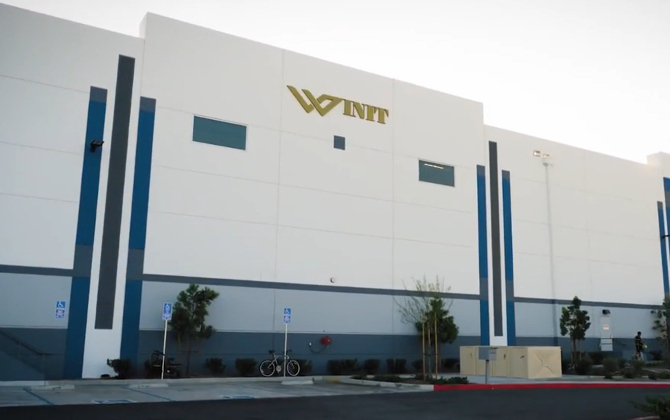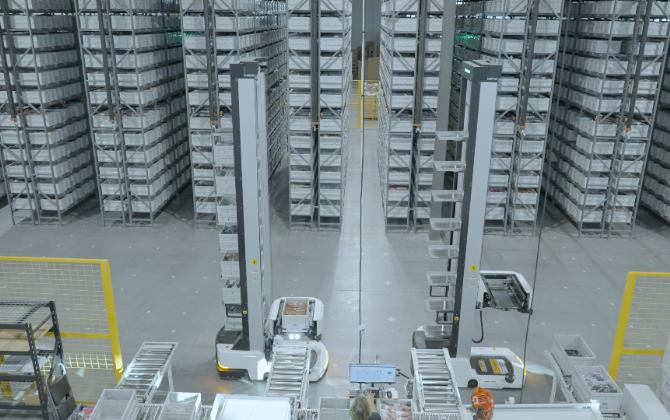Smart Stocking: Inventory Optimization Strategies for Modern Warehousing
Discover six core strategies for warehouse inventory optimization, from WMS integration to ASRS, smart slotting, and automated replenishment.
Modern warehousing has entered an era defined by speed, accuracy, and adaptability. Customer expectations for faster deliveries and broader product variety continue to rise, while warehouses are tasked with doing more with less: less space, less labor, and less room for error.
At the center of these challenges lies inventory optimization. It is not simply about keeping enough stock to meet demand. Rather, it is about finding the balance between too much and too little, storing goods in the right places, and ensuring every unit of inventory can be located, retrieved, and replenished with minimal waste.
For operators and decision-makers considering or already investing in automation, mastering inventory optimization is critical. It not only improves service levels but also maximizes the return on automation systems such as Automated Storage and Retrieval Systems (ASRS).
What Inventory Optimization Really Means
Inventory optimization in warehousing is the process of ensuring that every SKU is stored in the most efficient way possible, both physically and financially. It involves answering questions like:
-
How much inventory should be kept on hand to balance service levels with carrying costs?
-
Where should each SKU be located to minimize travel time and maximize throughput?
-
How can warehouses adjust stocking strategies when demand shifts unpredictably?
While traditional methods relied on manual spreadsheets or static rules, modern approaches integrate data analytics, automation, and real-time visibility to continuously refine stocking strategies.
The Challenges Warehouses Face Today
Warehouses that struggle with inventory optimization often run into:
-
Overstocking and understocking, which ties up capital in slow-moving stock while missing sales opportunities for high-demand SKUs.
-
Space constraints, where conventional racking and shelving reach capacity quickly as product variety grows.
-
Inaccurate records, when mismatched data between physical stock and systems causes costly mispicks and stockouts.
-
Manual processes, where relying on human decision-making for replenishment or slotting creates inefficiencies and errors.
-
Scaling limitations, as order volumes increase and processes that once worked collapse under pressure.
These challenges are especially pronounced in industries such as e-commerce, manufacturing, and 3PL, where accuracy and efficiency directly impact customer satisfaction and profitability.
Core Strategies for Inventory Optimization
-
Integrate a Warehouse Management System (WMS)
A strong WMS acts as the central nervous system of the warehouse. It synchronizes demand forecasts with available stock, provides real-time visibility, and integrates with automation systems to control movement. Without a reliable WMS, optimization becomes reactive rather than proactive.
-
Leverage ASRS for Space and Accuracy Gains
ASRS solutions bring inventory optimization to the next level by combining dense storage with automated movement. Benefits include:
-
Higher storage density by eliminating unnecessary aisle space and enabling vertical racking.
-
Accuracy improvements by automating putaway and retrieval, which reduces human error.
-
Scalability as new SKUs or higher volumes can be accommodated without expanding the footprint.
For warehouses facing space limitations or labor shortages, ASRS is a powerful enabler of inventory intelligence.

-
Adopt Smart Slotting Practices
Slotting decisions, or where products are placed, have a huge impact on efficiency. Modern warehouses use data-driven slotting to prioritize:
-
Fast-moving SKUs placed closer to picking stations.
-
Heavy or bulky items stored in lower, easily accessible positions.
-
Seasonal or promotional SKUs positioned temporarily in high-access zones.
When paired with automation, slotting rules can be dynamically updated as demand shifts.
-
Enable Real-Time Tracking and Visibility
Real-time visibility ensures operators always know what is in stock, where it is located, and when it is moving. RFID, barcode scanning, and system integration with ASRS reduce discrepancies and allow instant corrective actions.

-
Standardize Cycle Counting
Instead of disruptive annual stocktakes, cycle counting allows continuous verification of stock. Integrated with automation, counting can occur without halting operations, giving managers confidence in the accuracy of their inventory at all times.
-
Automate Replenishment Workflows
One of the most overlooked aspects of inventory optimization is replenishment. Automated replenishment rules ensure that picking locations are never empty when needed. This avoids downtime, improves order fill rates, and reduces the risk of over-ordering.
How to Measure Success: KPIs That Matter
Tracking the right metrics is key to validating optimization efforts. Warehouses should monitor:
-
Inventory accuracy (%), how closely records match actual stock.
-
Order picking accuracy (%), errors per order shipped.
-
Space utilization (%), the percentage of available capacity used effectively.
-
Inventory turnover ratio, the frequency of stock replenishment cycles.
-
Carrying cost of inventory, storage and capital costs tied to stock.
-
Fulfillment cycle time, the average time from order receipt to shipment.
These KPIs provide a clear picture of whether optimization strategies are delivering results.
Real-World Examples of Optimization in Action
-
E-commerce fulfillment centers use ASRS to handle SKU proliferation while keeping fast-moving items in high-access zones, reducing picking times by more than half.
-
Manufacturers leverage inventory intelligence to ensure raw materials are always available at the line side, preventing production stoppages.
-
3PL providers adopt WMS-integrated automation to serve multiple clients with diverse inventory profiles while maintaining high accuracy and efficiency.
How Hai Robotics Builds Inventory Intelligence for Modern Warehouses
Inventory optimization is not a one-time initiative. It is a continuous process of refinement and adaptation. The combination of a robust WMS, real-time visibility tools, and ASRS unlocks new levels of efficiency and resilience.
At Hai Robotics, we help warehouses build this intelligence with our HaiPick Systems. Designed for high-density storage and precise inventory management, our ASRS solutions deliver:
-
Up to 6× storage density within the same footprint.
-
99%+ picking accuracy for error-free fulfillment.
-
Flexible slotting and replenishment workflows that adapt to dynamic demand.
-
Scalability to expand as your business grows without costly physical expansion.
A prime example is John Lewis & Partners, which achieved a 300% increase in storage density and now stores more than 2 million pieces with HaiPick systems. Effective inventory intelligence goes hand in hand with smart space utilization, where rethinking warehouse design can unlock greater density, faster flow, and higher resilience — themes we explore further in innovative warehousing design.
By transforming stocking practices into a strategic advantage, Hai Robotics enables businesses to reduce costs, enhance agility, and achieve future-ready operations. Ready to see how smart stocking can reshape your warehouse? Contact Hai Robotics today and start building your inventory intelligence.
References
1) Gartner. Supply Chain Strategy and Planning Report 2024.
2) McKinsey & Company. Automation and the Future of Warehousing.
3) Modern Materials Handling. The Role of ASRS in Next-Generation Warehousing.
4) Logistics Management. Warehouse Inventory Optimization: Balancing Costs and Service Levels.




